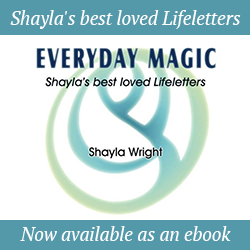
Many years ago, when I was living in Ottawa, I went with thousands of people one summer day to listen to the Pope speak. Some traditional Christians were sitting behind us in the field, and as I listened to them speak, I realized that they believed that Jesus had actually risen right up from the dead and gone to heaven in his human body. This was simply incredible to me. I wanted to turn around and say to them, “You’ve got to be kidding! How can you believe that ever happened? This cannot be what the story of Jesus is all about.” Since then I’ve realized that millions of people do take the story of the resurrection very literally. Even though that’s never been an option for me, I’ve always known that something very powerful lives at the heart of this story, something that is timeless and still available to us. As Adya Shanti, an American Zen teacher, has often said, “This is the story that has had the greatest impact on our planet. No matter what you feel about it, if you are a human being on earth, you’ve heard this story. It’s influence on our collective consciousness has been enormous.”
Once again I find myself immersed in contemplating the mystery of Easter. What is this whole thing all about? What is crucifixion? What is resurrection? How can I bring these experiences home to myself? How can I receive something from the essence of these images, these symbols, that will become medicine for me, and for us–for our struggles, our agony, our terrors and our doubts?
At the heart of this story I feel the energy of the sacred wound. Resurrection is about the possibility of something radically new arising through the healing of our core wound. The core wound is sacred because of this: if we can meet it, embrace it, open to it, it acts as a doorway into new life. Such renewal is a rare thing. The core wound lives in all of us, but most of us do not open to it, move through it, and receive the living gifts that lie inside it. Instead, we spend most of our lives dancing around the edges of this wound. We deny it, we avoid it, we compensate for it. Or we get tangled up in all of the neuroses and dysfunctions that are a secondary aspect of this wound, that are like ripples spreading out from the original rupture in the fabric of the soul. We can run like hell, or freeze our heart shut, but we never really escape from the core wound. Everybody has one. You might have been born with yours, having carried it with you from your lineage. The science of epigenetics has a lot to say about the intergenerational transmission of such wounds. Or your childhood may have delivered such a wound to you. Or it may have come through an illness, an accident, a death, a betrayal, a loss that seemed unbearable at the time.
Healing the core wound is not a conventional process. Such alchemy is not about making us more functional, happier, more productive, although these things can happen too. When we turn toward our core wound, we are being moved by something else, something much greater than our egoic motives and desires. We don’t really choose this transformation for ourselves, just as Jesus didn’t really choose the crucifixion—he surrendered to it. In the depth of this healing movement, we are asked to let go of our most cherished defences, the places where we have armoured ourselves against this wound, and against the sacred flow of life itself. To heal this wound we have to become very soft and very strong, at the same time. We don’t know where we are going, we don’t really know anything. We have to trust without a reason to trust. We are in a freefall of the heart, letting love lead us into the darkness.
It’s very powerful to contemplate this, that our deepest gifts and resources may lie hidden inside our sacred wound. And that if we really long to enter this territory, we will be required to undergo a kind of death, a peeling away of an identity that seemed very real. Death and resurrection are not the exclusive domain of saints and heroes. We go through these cycles endlessly, as long as we are human. The more willing we are, and the more support we have, the more grace will pour into our lives.
As long as I live, I vow to die and be reborn, die and be reborn, die and be reborn, over and over again….
Rob Brezny
with love,
Shayla
2 Comments
Join the conversation and post a comment.



Thank you Shayla for this piece today. I am sitting painfully in my core wound and your letter reminded me of the new beginnings that will arise from here.
Beautiful!
Thank- you. May the Easter basket of your heart be filled with all you cherish.